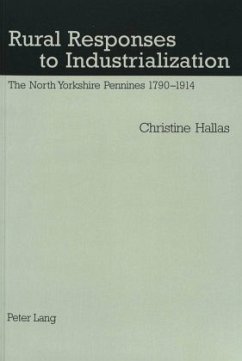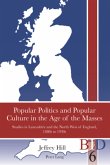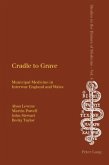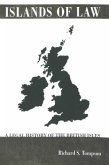This fascinating book brings fresh insight to the debate on the role of the countryside in the industrialization process. By providing an integrated study of an upland area, the North Yorkshire Pennines, the study is able to address two key issues concerning the countryside: how well it responded to the challenge of industrialization and urbanization and how successful it was in surviving in an increasingly industrial country. By using previously unexploited private papers in conjunction with national sources, the author is uniquely able to demonstrate the mechanisms of rural response. Wensleydale and Swaledale are an ideal area to study as they are contiguous and superficially similar and yet, as this book shows, enjoyed or endured very different experiences. This book challenges many of the traditional views about the role of the countryside. By measuring the wealth of the two dales it demonstrates how landownership and farmholding patterns coupled with developing dairy and livestock production enabled some communities to retain their vitality while successfully responding to unprecedented change. It shows how pre-industrial craft occupations and a by-employment textile industry survived for most of the period and how the existence of a volatile mining industry could both enhance and threaten that response. Finally the book shows how transport and migration were key facilitators in the process of response.
"...this book truly fills a serious gap in the literature on the North Riding Dales, on Yorkshire, and on the regional impact of industrialization. The material is clearly organized to present a coherent account and convincing analysis. [...] An important book." (Northern History)
"Hallas' detailed and dense study of the rural responsiveness to industrialisation of the areas of Wensleydale and Swaledale in the North Yorkshire dales [...] is an excellent analysis of the interplay of various factors within the economy of the study area. [...] The study, because of its geographic emphasis on a northern upland area, is especially welcome; and because it is a study of three different regions which have previously been considered to be homogenous it gives a much closer picture of the complexities of rural communities and a clearer understanding of the dynamics of a local response to industrialisation." (Matthew Woollard, Local Population Studies)
"...this is a holistic economic study whose greatest strengths lie in the way it analyses the interrelation between demography, social structure, agriculture, diverse local industries, transport and migration within a clearly defined, internally varied, local setting." (K.D.M. Snell, Rural History)
"The publication of an economic history of a rural locality is a relatively rare event and much to be welcomed. In this instance, Christine Hallas analyzes changes in the Pennine dales of Wensleydale and Swaledale between 1790 and 1914. [...] Those with an interest in the locality are particularly well-served and no doubt the volume will be used for years to come as a stimulus to further study, both of the economy itself and in cognate fields such as demographic history." (June A. Sheppard, The Agricultural History Review)
"Hallas' detailed and dense study of the rural responsiveness to industrialisation of the areas of Wensleydale and Swaledale in the North Yorkshire dales [...] is an excellent analysis of the interplay of various factors within the economy of the study area. [...] The study, because of its geographic emphasis on a northern upland area, is especially welcome; and because it is a study of three different regions which have previously been considered to be homogenous it gives a much closer picture of the complexities of rural communities and a clearer understanding of the dynamics of a local response to industrialisation." (Matthew Woollard, Local Population Studies)
"...this is a holistic economic study whose greatest strengths lie in the way it analyses the interrelation between demography, social structure, agriculture, diverse local industries, transport and migration within a clearly defined, internally varied, local setting." (K.D.M. Snell, Rural History)
"The publication of an economic history of a rural locality is a relatively rare event and much to be welcomed. In this instance, Christine Hallas analyzes changes in the Pennine dales of Wensleydale and Swaledale between 1790 and 1914. [...] Those with an interest in the locality are particularly well-served and no doubt the volume will be used for years to come as a stimulus to further study, both of the economy itself and in cognate fields such as demographic history." (June A. Sheppard, The Agricultural History Review)




